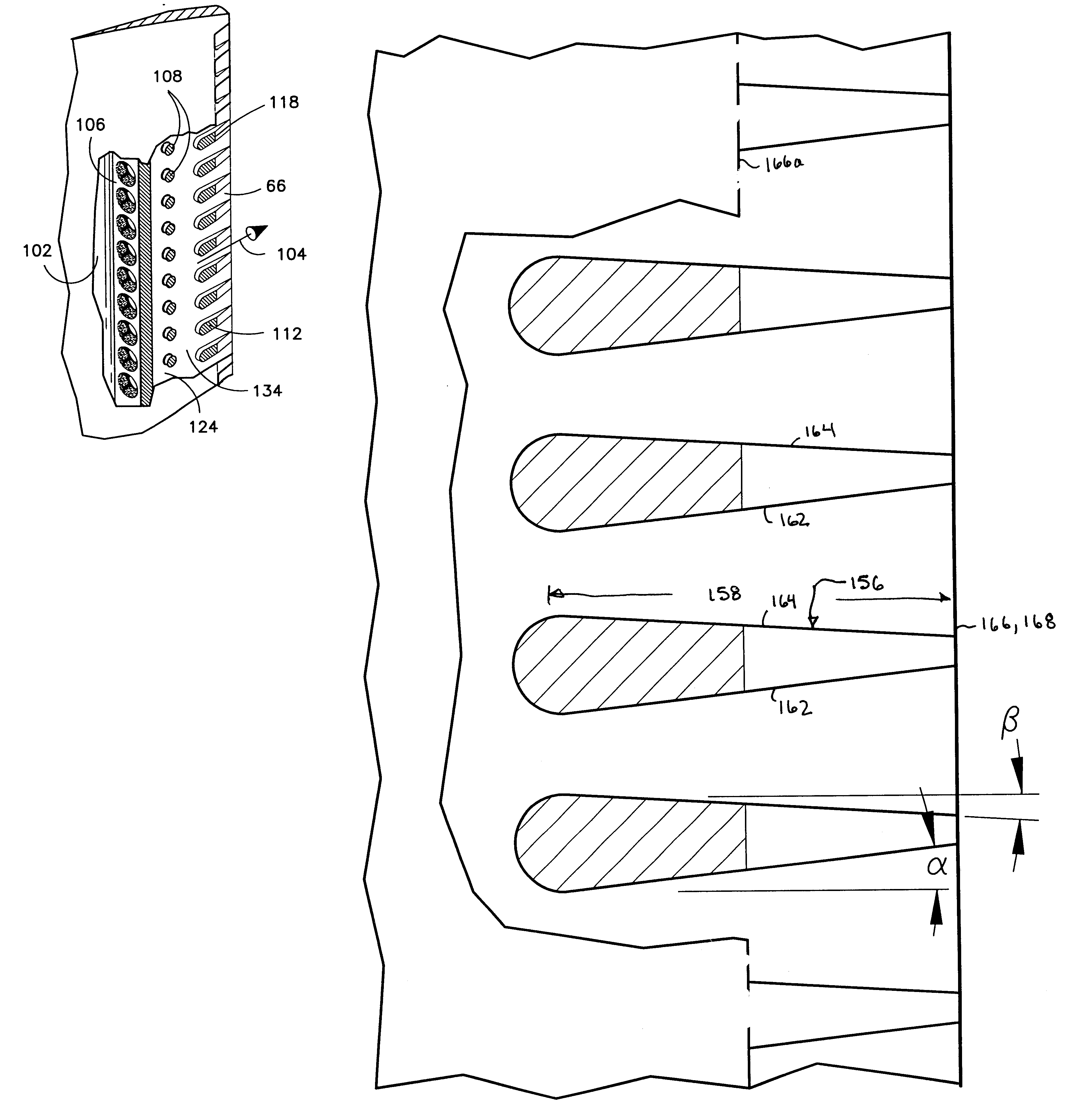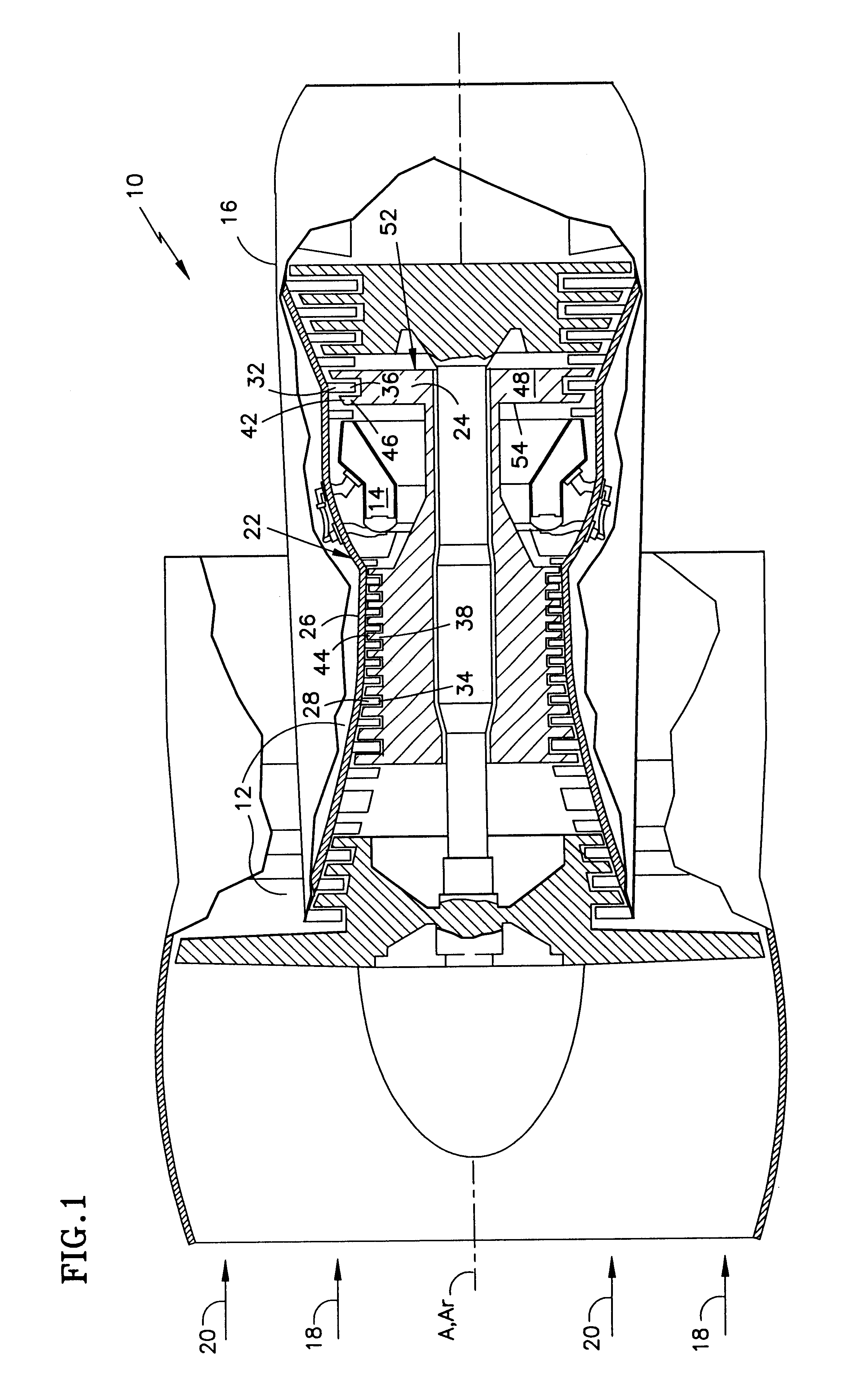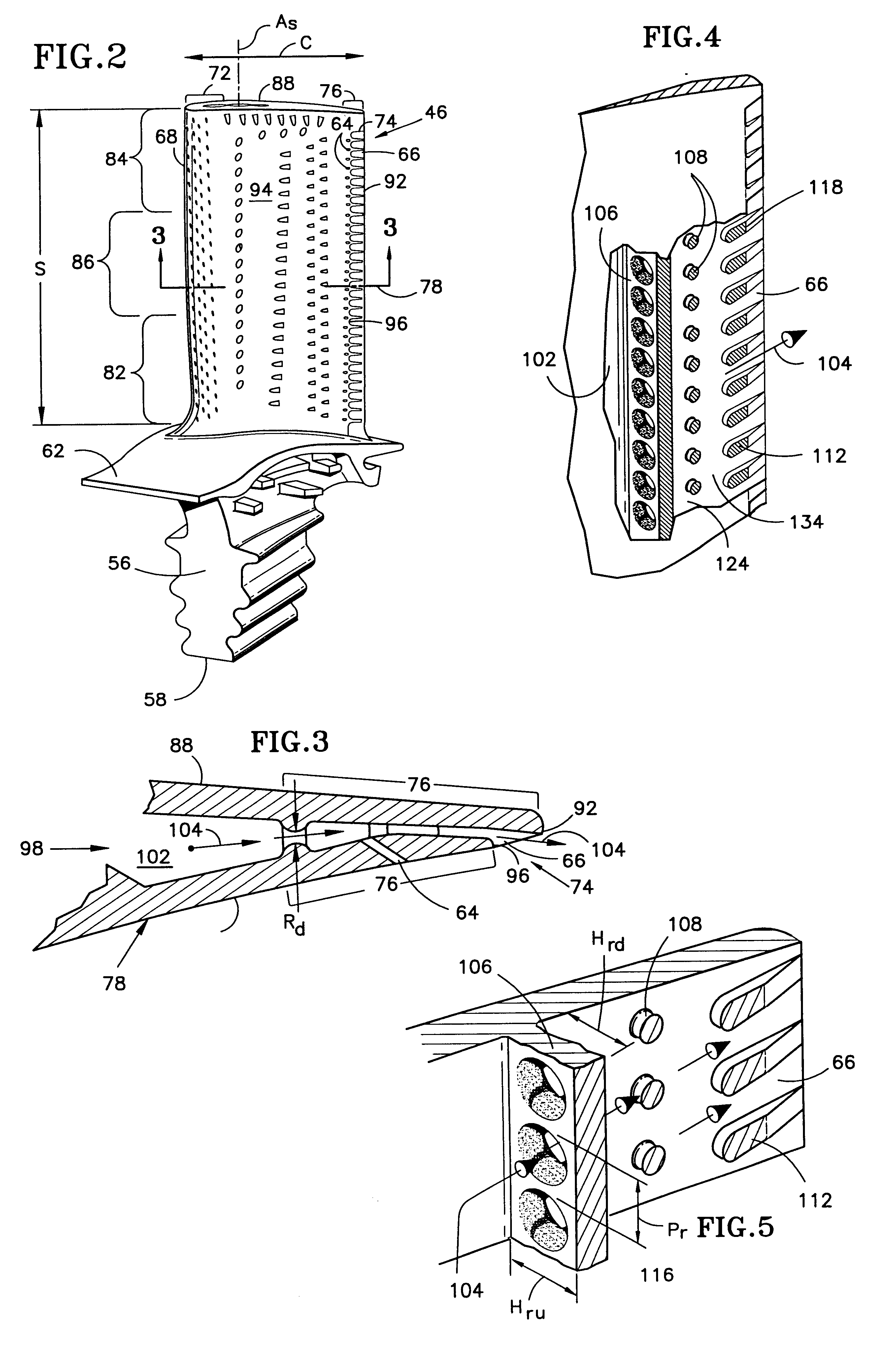Coolable airfoil structure
- Summary
- Abstract
- Description
- Claims
- Application Information
AI Technical Summary
Benefits of technology
Problems solved by technology
Method used
Image
Examples
embodiment 156
FIG. 8 shows an alternate embodiment 156 of the flow dividers 112 and is shown in a converging diffusing section 158. The pair of converging sidewalls 162,164 are converging in the downstream direction such that spanwisely facing sidewalls of adjacent dividers diverge to define the diffusing section 158 between adjacent dividers. Each flow divider has a first converging sidewall 162 which faces spanwisely inwardly. The first converging sidewall is angled away from the direction of flow between flow dividers with an angle .alpha. as measured with respect to a line parallel to the axis of rotation Ar. In the embodiment shown, the angle .alpha. might also be measured measured with respect to a reference line perpendicular to a spanwise line connecting the centers of the leading edge circle. A second converging sidewall faces spanwisely outwardly. The second converging sidewall is angled away from the direction of flow between flow dividers with an angle .beta. as measured with respect ...
embodiment 170
FIG. 9 is an alternate embodiment 170 of the flow dividers 156 shown in FIG. 8. The flow divider 170 has a constant thickness section 172. The constant thickness section includes a pair of parallel sidewalls 174 which are radially spaced from each other. Each of the parallel sidewalls is also radially spaced from and parallel to a parallel sidewall of an adjacent flow divider. The parallel sidewalls of adjacent flow dividers, in conjunction with the pressure wall and suction wall, define constant area channels 176 of constant width between the flow dividers.
The converging section of the flow dividers includes a pair of converging sidewalls 176, 178. In this embodiment, the angle .alpha.2 of the radially outer flow divider 178o is slightly greater than the angle .alpha.1 if the radially inner flow divider 170i.
During operation of the gas turbine engine shown in FIG. 1, hot working medium gases are flowed along the working medium flowpath 18 over the airfoil 46. Cooling fluid is flowe...
PUM
 Login to View More
Login to View More Abstract
Description
Claims
Application Information
 Login to View More
Login to View More - R&D
- Intellectual Property
- Life Sciences
- Materials
- Tech Scout
- Unparalleled Data Quality
- Higher Quality Content
- 60% Fewer Hallucinations
Browse by: Latest US Patents, China's latest patents, Technical Efficacy Thesaurus, Application Domain, Technology Topic, Popular Technical Reports.
© 2025 PatSnap. All rights reserved.Legal|Privacy policy|Modern Slavery Act Transparency Statement|Sitemap|About US| Contact US: help@patsnap.com



